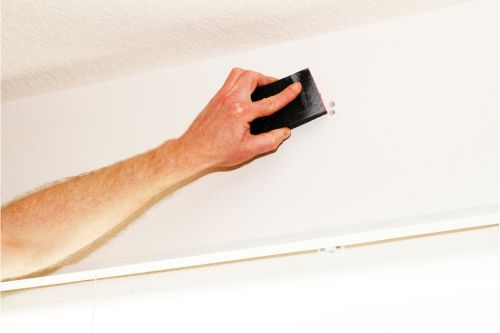At Bartolomé Bas Pinturas, we understand the importance of proper preparation before starting any painting project in your home. The key to achieving a professional and long-lasting finish lies in the steps you take before opening the paint can. In this post, we’ll guide you through the essential steps and provide helpful tips for prepping your walls before painting.
1. Thoroughly clean the surface
Before applying any paint, it is crucial to make sure the surface is clean and free of dust, dirt and grease. Use a damp cloth with mild detergent to clean the wall and remove any accumulated residue. Be sure to rinse thoroughly and allow the surface to dry completely before continuing.
It is important to remove any dust or dirt particles that may affect the adhesion of the paint and the final finish. In addition, a clean surface ensures that the paint is applied evenly and that the colour is true to the expected colour. Proper cleaning is the first step to a successful and long-lasting paint project.
Contact our professionals to paint your home
2. Repair imperfections
Carefully inspect the wall for cracks, holes or other imperfections. Use caulk to fill any holes or cracks, and sand lightly to make the surface smooth. If there are areas of peeling paint, scrape or sand to remove it completely and ensure that the new coat of paint adheres properly.
Surface imperfections can negatively affect the final finish of your paint project. It is important to take the time to properly repair any damage before you begin painting. This will ensure a smooth, professional finish that will enhance the beauty of your walls.
3. Mould and mildew removal
If you find areas of mould or mildew, it is important to treat them properly before painting. Use a bleach and water solution to clean the mildew, making sure to protect yourself with gloves and a mask. After cleaning, allow the surface to dry completely before applying any paint.
Mould and mildew can be indicators of moisture problems in your home, which can worsen if not properly treated. It is important to remove mould and treat the underlying cause to avoid future problems and ensure a healthy indoor environment.
4. Protect unwanted areas
Before you start painting, be sure to protect any areas you don’t want to paint, such as door frames, skirting boards and windows, with painter’s tape and masking paper. This will prevent paint from running off the designated areas and ensure a clean, professional finish.
Proper protection of unwanted areas is crucial to avoid stains and paint drips on surfaces you don’t want to paint. Take the time to cover and protect all areas that are not intended to be painted and make sure they are fully protected before you begin your project.
5. Applying primer
Priming is a crucial step in preparing walls before painting. It helps seal the surface, improves paint adhesion and provides a more durable and uniform finish. Choose a primer suitable for the type of surface you are painting and apply it according to the manufacturer’s instructions.
Primer provides a solid base for the paint and helps ensure that the colour adheres evenly and durably to the surface. Don’t underestimate the importance of this step in your painting project; a good primer can make all the difference to the final finish of your walls.
6. Final sanding
Before applying the final paint, lightly sand the entire surface to remove any irregularities and ensure a smooth, even finish. Use fine sandpaper and work in circular motions until the surface is completely smooth to the touch.
Final sanding is the finishing touch in preparing your walls before painting. Be sure to take the time to carefully sand the entire surface to remove any imperfections that may affect the final finish of your project. Proper sanding will ensure a professional and long-lasting result.
Additional tips:
- Use quality tools: Investing in quality brushes, rollers and other painting equipment will help you achieve better results.
- Work in thin layers: Apply paint in thin, even layers to avoid drips and build-up.
- Ventilate properly: Be sure to ventilate the area well while painting to avoid build-up of fumes and odours.
- Follow the manufacturer’s recommendations: Always read and follow the manufacturer’s instructions regarding drying times, paint thinning and other important aspects.
At Bartolomé Bas Pinturas, we are committed to providing you with the best products and advice to make your painting projects a success. With proper preparation and the right products, you can achieve professional and long-lasting results on your walls.


